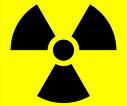
April 28, 2010 - A national "CT Dose Summit" will bring together leading experts on medical imaging to lay the foundation for establishing guidelines for performing computed tomography (CT) scans.
The summit, "The CT Dose Summit: Scan Parameter Optimization," will be held April 29-30 at the Renaissance Concourse Atlanta Hotel in Atlanta. Hosted by the American Association of Physicists in Medicine (AAPM), the goal of the summit is to begin establishing a set of consensus protocols, which will help to ensure that life-saving CT exams can always be done as safely and effectively as possible. These protocols vary considerably according to the particular procedure, the age and body type of the patient, and the make and model of the CT scanner.
To date, in the United States, there are no standards protocols for CT radiation dose exposure to patients during radiological procedures. Hospitals and imaging centers have developed their own protocols, typically based on those provided by their system’s manufacturer.
The AAPM plans to work with technical experts from throughout the imaging community, including leading radiologists and manufacturers, to develop consensus protocols that will be freely available via the Internet.
"These protocols determine the quality of the CT exam. With the increased capabilities and complexities of modern CT systems, it doesn’t make sense to reinvent protocols at every institution,” said Cynthia McCollough, Ph.D., an AAPM member and co-organizer of the summit. “Users are asking for optimized protocols, and we're responding to that need."
Medical imaging techniques such as CT scans have become more and more sophisticated in the last few years and have revolutionized medicine. However, since CT scanners employ X-rays, hospitals and clinics follow the general practice of minimizing the risk by keeping the doses as low as reasonably achievable (ALARA).
The AAPM has long led efforts to support the use of standards for measuring and minimizing radiation dose in medical applications, including CT procedures. Hospitals and clinics employ AAPM members to help establish and review CT protocols, check the proper functioning of scanners, and adapt protocols as the technology changes.
In the last several months, many medical physicists have witnessed first-hand how some patients have grown concerned about reports in the media questioning the risks and challenging the safety of CT scans.
Even though the risk to patients may be small, their fear can be very real, and AAPM says the Atlanta CT Dose Summit arose partly as a response to these fears. The summit will begin by reviewing the fundamental principles of protocol design and will then examine protocols for the most common types of CT examinations, from routine imaging of the head and body, to newer applications such as cardiac CT and CT perfusion imaging. As the highest dose CT procedure, the AAPM has started their protocol optimization with CT perfusion. Their consensus guidelines will soon be publicly available resource to help practices nationwide be sure they are performing this examination correctly.
"This will move us a long way forward," said William Hendee, Ph.D., the third co-organizer of the summit.
For more information: www.aapm.org/meetings/2010CTS/default.asp


 August 09, 2024
August 09, 2024 








